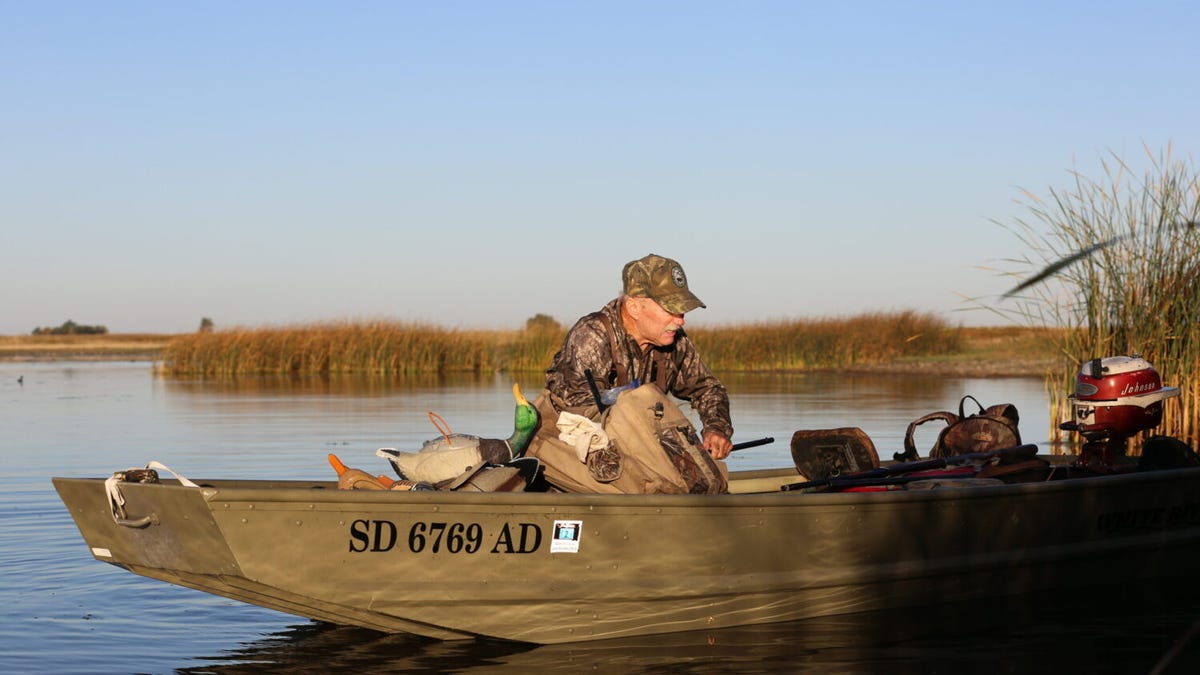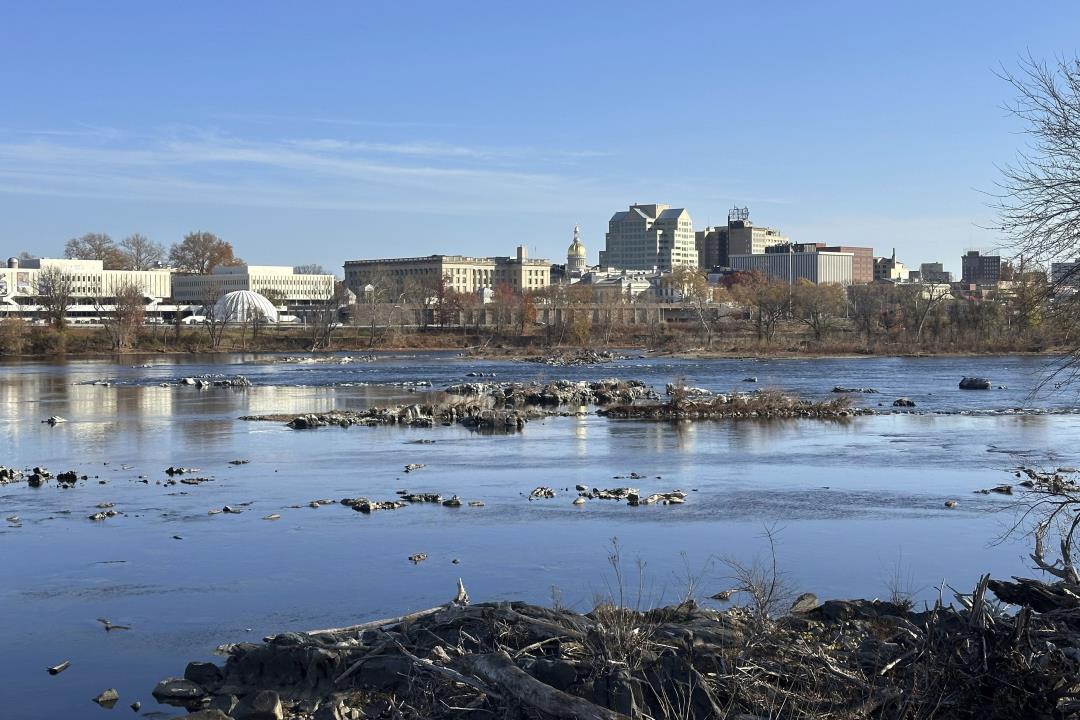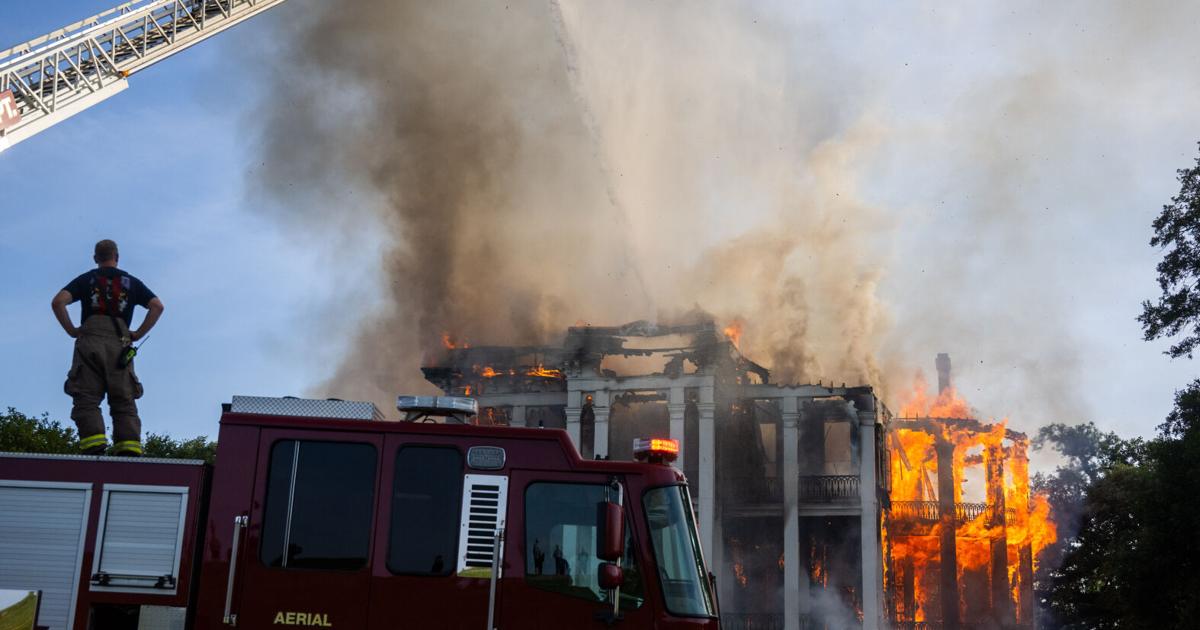San Francisco, CA
$52 million in new funding to restore San Francisco Bay

Federal officials on Wednesday announced $52 million in new funding for two dozen projects around San Francisco Bay to restore wildlife, expand wetlands and reduce the amount of trash and other pollutants going into the bay.
The 24 projects from the U.S. Environmental Protection Agency include restoration of marshes in the East Bay, clean ups of homeless encampments in San Jose creeks, and removing 1,000 old toxic creosote-treated timber pilings along the Richmond waterfront.
The funding, approved by Congress, is an increase from the past 20 years, when total federal spending for such projects has averaged about $5 million per year.
“It is getting us closer to a level of annual funding we should be getting for the bay, but also making sure all parts of the bay are getting projects,” said Martha Guzman, administrator for the U.S. EPA’s regional office in San Francisco. “It’s really something to celebrate.”
Environmental groups have pushed Congress for years to provide more federal money for Bay Area projects, including efforts to protect shoreline communities against sea level rise by expanding tidal marshes.
They have noted that other parts of the United States, such as Puget Sound in Washington and Chesapeake Bay on the East Coast, have typically received $30 million to $60 million a year from Congress for similar projects. Repeated efforts by former Rep. Jackie Speier, D-San Mateo, who retired in January, have raised the profile in Congress of San Francisco Bay restoration work.
“It’s exciting and long overdue that federal investment in San Francisco Bay is finally increasing,” said David Lewis, executive director of Save the Bay, an environmental group based in Oakland. “With climate change and pollution threats, the bay needs enormous investment over the next decade.”
Wednesday’s EPA grants include $4 million to restore 2,100 acres of former salt ponds at Eden Landing in Hayward. Another $3 million was approved to create a new tidal marsh along the Burlingame shoreline; $3.7 million to connect Calabazas and San Tomas Aquino creeks to restored salt ponds near Alviso; and $4 million to build 17 stormwater treatment facilities in Marin County. The grants will also help multiple efforts to capture trash in stormwater systems before it flows to the bay, reduce PCB pollution and fund school programs involving creek restoration and watershed protection.
EPA officials planned an event with Rep. Barbara Lee, D-Oakland at Arrowhead Marsh on Wednesday morning to highlight the new investments, which include projects in all nine Bay Area counties, with special emphasis on low-income areas at particular risk of pollution and flooding.
Last week, President Biden visited the Baylands Nature Preserve in Palo Alto to announce a $575 million grant program through NOAA to help coastal communities nationwide confront rising sea levels.
“When I think of climate, I think of jobs,” he said. “When I think of climate, I think of innovation. When I think of climate, I think of turning peril into progress.”
Ocean levels have risen across the world in recent decades as glaciers and polar ice sheets have been melting, and warming sea water has expanded. San Francisco Bay has risen 8 inches since the mid-1800s, increasing flood risk during big winter storms.
Recent studies by the U.S. Geological Survey and other scientific organizations estimate that the bay will rise up to another 2 feet by 2050 and up to 5 feet or more by 2100.
In some areas, projects involving concrete have already started. San Francisco International Airport officials are moving ahead with a $587 million plan to build a sea wall 10 miles around the airport to stop runways from flooding during storms. San Francisco has begun work on a $5 billion project to rebuild the massive Embarcadero seawall.
In other parts of the bay, scientists are restoring old industrial salt ponds and other bayfront sites back to tidal marshes to absorb rising storm surges and waves.
“The two options are concrete and mud,” said Warner Chabot, executive director of the San Francisco Estuary Institute. “And in many cases mud is more cost effective, more efficient and more adaptable over time.”
Wednesday’s funding is contained in competitive grant program called the San Francisco Bay Water Quality Improvement Fund, created in 2008, and run by the EPA. About $5 million this year came from the $1 trillion in bipartisan infrastructure bill that Biden signed in November 2021.
Local residents also have been contributing. In 2016, voters in the nine Bay Area counties approved Measure AA, a $12 annual parcel tax, to fund wetlands restoration and flood control projects around the bay. The measure, which will raise $25 million a year for 20 years, or $500 million total, already has funded dozens of projects.
One of the largest is the ongoing effort to restore former industrial salt evaporation ponds back to natural conditions. In a landmark deal in 2003 brokered by Sen. Dianne Feinstein, Minneapolis-based Cargill Salt sold 15,100 acres of its salt ponds, which stretch from Hayward to San Jose to Redwood City, to state and federal agencies for $100 million. That sale also included an additional 1,400 acres near Napa.
The idea was to take the ponds — used for a century to harvest salt for food, medicine and road de-icing — and return them to natural conditions over 50 years, bringing back birds, fish, harbor seals, leopard sharks and dozens of other species that have struggled in the bay because of development and a burgeoning human population. As sea level rise has become more pressing, the restored wetlands also are seen as a way to reduce flood risk and improve water quality.
So far, work on about 3,750 acres is already finished, with another 625 acres scheduled to be completed by the end of this year.


San Francisco, CA
49ers near deal to sell 6.2% stake in franchise to 3 Bay Area families

SANTA CLARA, Calif. — According to San Francisco 49ers owner Jed York, interested parties have approached his family “probably on a weekly basis” to attempt to buy a piece of the 97% of the team the Yorks own.
This week, it seems, three of the parties who approached the York family came with the right offer. The 49ers are working to complete the sale of more than 6% of the team to three Bay Area families, according to a league source.
Sportico, which first reported the pending sale Thursday, said the sales will be done at a franchise valuation of more than $8.5 billion. If the deal is completed at that number, the valuation will be the largest ever for a sports franchise in a transaction.
The Khosla, Deeter and Griffith families are the prospective buyers, with the Khoslas purchasing 3.1%, the Deeters obtaining 2.1% and the Griffiths acquiring 1%, The Athletic reported Thursday afternoon.
The NFL is expected to formally approve the transactions at the spring owners’ meetings in Minneapolis next week. The 49ers declined to comment on the proposed sales Thursday./p>
br/>The Niners have been receiving offers for the past few months, and York said in March at the annual league meeting that his family had been considering a sale of up to 10% of its ownership stake. At the time, he called it a “family asset allocation decision” based on the wants and needs of various family members.
“It’s just one of those things where if there’s an opportunity that makes sense, we would always explore that, but I’m not sure what we’re going to end up doing,” York said then. “And if we do, we would try to find the right people who would help bolster everything that we’re doing in and around the team, on the field, off the field, and just make sure that we had good partners that are with us.”
All three of the reported buyers have venture capital backgrounds. Vinod Khosla is co-founder of Sun Microsystems and the founder of Khosla Ventures in Menlo Park, California. Byron Deeter is a partner at Bessemer Venture Partners in Redwood City and San Francisco, and William Griffith is a partner at Iconiq Capital in San Francisco.
In other franchise-related news, theLos Angeles Chargersare requesting approval to sell an 8% stake in the team to a private investment firm, The Los Angeles Times reported, citing a person with knowledge of the approval request sent in a memo to NFL owners.
The newspaper said Chargers owner Dean Spanos and siblings Michael Spanos and Alexis Spanos Ruhl will attempt to sell the stake to private investment firm Arctos at next week’s meetings.br/]
Copyright © 2025 ESPN Internet Ventures. All rights reserved.
San Francisco, CA
UC San Francisco’s psilocybin therapy shows promise for Parkinson’s patients

On a quiet plot of land in rural New Mexico, Jeff Deming feels like he’s really living, once again.
“Mentally, it’s day and night,” he said.
He’s able to do the things that make him happy, like woodworking, despite living with Parkinson’s Disease.
“Physically, I feel better than I did 2-3 years ago,” he said.
Deming credits the treatment he received during a first-of-its-kind clinical study he participated in at the University of California, San Francisco: Psilocybin therapy for people with Parkinson’s Disease.
“This is very cliché, but it truly gave me my life back,” he said.
Psilocybin is a naturally occurring psychedelic compound found in ‘magic mushrooms.’ When administered in controlled, clinical research settings, it has shown promise in treating depression and anxiety, both of which are mood symptoms associated with Parkinson’s that are linked to a faster physical decline.
“The neurodegeneration that is happening isn’t just impacting motor circuitry – it’s impacting a lot of brain circuitry. That creates this huge burden of symptoms that we often overlook and don’t talk about enough, maybe,” said Dr. Ellen Bradley, of UCSF. “We were really surprised by how well this trial went.”
Bradley and a team of researchers at UCSF are trying to figure out how Psilocybin may help treat mood dysfunction and more in those living with the neurodegenerative disease.
“This is a first step, and now we’ve opened the door to being able to really investigate the effects of Psilocybin for people with Parkinson’s,” she said.
12 patients participated in this first-round study, which involved a first and second course of Psilocybin treatment.
“We had folks do a lower dose of Psilocybin – a 10 mg dose initially – and monitored them for a couple of weeks to see how that went,” Bradley said. “If it did go well, if we didn’t have safety concerns, then they were eligible for the full therapeutic dose of 25 mg.”
All 12 patients were able to complete both courses of treatment without reporting any serious side effects, according to Bradley.
“We want to find out not just does Psilocybin therapy work, but if it does, how does it work? That mechanistic piece is so important,” she said. “Can it change the brain’s ability to adapt to its environment and to rewire itself?”
While there were no serious adverse effects reported, every patient didn’t have the same life-changing experience as Deming says he experienced. Though many did report their motor and cognitive functions improved afterwards, per Bradley.
“We don’t have a reason to believe that this is a treatment that is going to be a good fit for every patient. That is never really our expectation in medicine. But our goal is to figure out when is it the right treatment and how much for which patient,” Bradley said.
Bradley says her team is scaling up their work and are in the process of recruiting for a larger study, due to the success with the initial research.
“That was really exciting just to see that promising safety profile in this initial pilot. That kind of gives us a green light to go forward with more in-depth research,” she said. “We really desperately need new treatments for Parkinson’s. It’s a very quickly growing disease that’s becoming more and more prevalent in our population, so, we really feel like we have to be investigating every possible route that could mean new treatments for patients.”
Two years removed from his controlled Psilocybin dosing, Deming says he feels better now than he did when he received his initial diagnosis four years ago.
“Something about this experience just freed everything back up so I could think again, I could dream again,” he said.
He’d like to see more research into psychedelic therapies for a range of conditions, with the hopes that more people will be able to reclaim the reins of life, as he has.
“There’s been such a stigma against the research with it,” he said. “It is definitely worth looking more closely at.”
San Francisco, CA
San Francisco 49ers 2025 schedule: Will a last-place schedule help produce a bounce back?

The NFL will release the 2025 schedules for all 32 teams at 8 p.m. (ET) Wednesday. Here is what we know about the San Francisco 49ers’ schedule so far.
The 49ers will play each team from the NFC South and AFC South, as well as the 2024 fourth-place teams from the NFC North, NFC East and AFC North. San Francisco also will see its NFC West division rivals twice, once on the road and once at Levi’s Stadium, as part of its 17-game schedule.
Here is the lineup of home and road opponents, listed alphabetically.
| Home | Road |
|---|---|
|
Arizona Cardinals |
Arizona Cardinals |
|
Atlanta Falcons |
Cleveland Browns |
|
Carolina Panthers |
Houston Texans |
|
Chicago Bears |
Indianapolis Colts |
|
Jacksonville Jaguars |
Los Angeles Rams |
|
Los Angeles Rams |
New Orleans Saints |
|
Seattle Seahawks |
New York Giants |
|
Tennessee Titans |
Seattle Seahawks |
|
Tampa Bay Buccaneers |
The 49ers went 6-11 in 2024 as injuries and a Super Bowl hangover again got the best of them. San Francisco has reached the Super Bowl twice in Kyle Shanahan’s eight seasons, and both times followed up that appearance with a last-place finish (the 49ers went 6-10 in 2020 after losing quarterback Jimmy Garoppolo and defensive end Nick Bosa to early-season injuries).
After a roster reset this offseason ahead of Brock Purdy’s anticipated massive contract extension, the 49ers, with the benefit of playing a last-place schedule, will need to show they can bounce back and re-establish themselves as one of the NFC’s contenders.
Come back Wednesday night for the 49ers’ week-to-week schedule, plus season analysis and predictions.
(Photo of Brock Purdy: Ezra Shaw / Getty Images)
-

 Austin, TX6 days ago
Austin, TX6 days agoBest Austin Salads – 15 Food Places For Good Greens!
-

 Technology1 week ago
Technology1 week agoBe careful what you read about an Elden Ring movie
-

 Technology1 week ago
Technology1 week agoNetflix is removing Black Mirror: Bandersnatch
-

 World1 week ago
World1 week agoThe Take: Can India and Pakistan avoid a fourth war over Kashmir?
-

 News1 week ago
News1 week agoReincarnated by A.I., Arizona Man Forgives His Killer at Sentencing
-

 News1 week ago
News1 week agoJefferson Griffin Concedes Defeat in N.C. Supreme Court Race
-

 Health1 week ago
Health1 week agoN.I.H. Bans New Funding From U.S. Scientists to Partners Abroad
-

 News1 week ago
News1 week agoWho is the new Pope Leo XIV and what are his views?



















